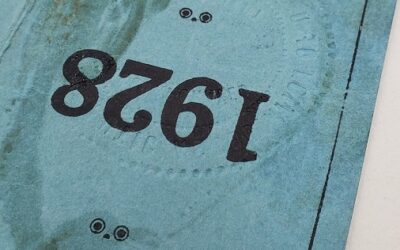Nebraska delegate Henry W. Yates addressed the World’s Congress of Bankers and Financiers in June of 1894 in Chicago on Nebraska’s experience with wildcat banks during territorial days. Information from his paper was presented to the Nebraska State Historical Society in October of that year.
Yates believed the “banking resources of the [territorial] period were founded upon a basis which still supplies ample capital for the enterprising adventurer–the gullibility of the public. The Territory came into existence at the height of the ‘wild cat and bob-tailed currency’ times and the Nebraska settler who could raise sufficient money to obtain a charter and pay for the printing of his bank notes, had what would be termed in these times a ‘bonanza.’ . . .
“The financial panic of 1857 put an end to this business and the only record I have ever seen referring to the banking of this period is in the comptroller of currency’s last report to Congress. Under the statistics of state banks prior to 1863 I find the following: ‘Nebraska, 1857, four banks, capital, $205,000; circulation, $353,796; deposits, $125,291. Nebraska, 1858, six banks, capital, $15,000; circulation, $41,641; deposits, $3,673.’
“The archives of your society may contain some relics of these early banks, and I presume the official records of the Territorial legislatures will show the houses and numbers of those authorized to do business, as special charters were required in all cases. No banking board was provided or any public official to whom reports were required to be made, and if any reports of the condition were published it was done voluntarily by the bank, and they were doubtless ‘doctored’ for the occasion. I do not know upon what authority the figures were given which appear in the comptroller’s report to which I referred, but no reason exists for doubting their accuracy so far as they go, and they were doubtless taken from some of these published reports.”
(September 2002)



